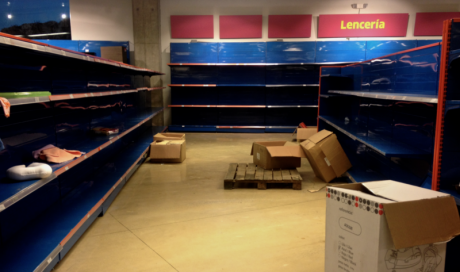
We are watching an entire nation collapse right in front of our eyes. As you read this article, there are severe shortages of just about anything you can imagine in Venezuela. That includes food, toilet paper, medicine, electricity and even Coca-Cola. All over the country, people are standing in extremely long lines for hours on end just hoping that they will be able to purchase some provisions for their hungry families. At times when there hasn’t been anything for the people that have waited in those long lines, full-blown riots have broken out. All of this is happening even though Venezuela has not been hit by a war, a major natural disaster, a terror attack, an EMP burst or any other type of significant “black swan” event. When debt spirals out of control, currency manipulation goes too far and government interference reaches ridiculous extremes, this is what can happen to an economy. The following are 8 lessons that we can learn from the epic economic meltdown in Venezuela…
#1 During an economic collapse, severe shortages of basic supplies can happen very rapidly…
“There’s a shortage of everything at some level,” says Ricardo Cusanno, vice president of Venezuela’s Chamber of Commerce. Cusanno says 85% of companies in Venezuela have halted production to some extent.
At this point, even Coca-Cola has shut down production due to a severe shortage of sugar.



“Durrig an economic collapse, severe shortages of basic supplies can happen very rapidly…”
Actually, this is absolutely not true. Manufacturers/importers, jobbers, wholesalers, and distributors, all manage their inventory based upon two factors – demand for any given product, and the profitability of stocking said product(s).
As the rate of price inflation increases, it becomes less profitable to maintain large stocks of most products, and so the total stock of products “in the pipeline” decreases. We are seeing this already in many categories of retail products in the US – I.E. Where once there were a hundred bags of flour on the shelf at the grocery store, there are now only 20 or 25. If they sell 10 bags of flour today, they will order 10 tonight to replace them. While the system remains profitable, the distributor will have sufficient stock on hand to replenish what each store orders each night, and the 10 bags of flour will be replaced on the shelf the very next day.
But as inflationary pressures increase, it becomes less profitable for wholesalers and distributors to maintain inventories, and so it may be 2 days, or 3, or even longer, before the inventory at the grocery store is replenished – because the distributor will wait until they have a large enough backlog of orders from retailers, to purchase the item in whole lots from the wholesaler or jobber (and thus get a lower price). But this only transfers the economic pressure up the pipeline, to the wholesalers and jobbers, who are also finding it less profitable to maintain warehouses full of product.
As the economic crisis deepens, many jobbers and wholesalers will decide that certain products just aren’t worth stocking at all. This typically happens first with imported items – because of decaying exchange rates , and also because of the longer period between ordering the goods and receiving delivery of them.
At some point, the “just in time” (JIT) retail pipeline described above becomes unreliable enough that individual retailers (and individual consumers) begin panic buying – that is, they buy what they can obtain today – even in excess of what they think they need – simply because it is available at that moment. This then, increases the stress on the JIT system even further, and will eventually begin to collapse certain links in the chain – which only increases pressure upon the remaining wholesalers, jobbers, and distributors.
Once businesses in the distribution chain begin to fail (or otherwise cease doing business), the dominoes begin to fall, and each one puts pressure upon the next, until the shelves at the retail stores are empty.
And while that outcome – empty shelves – is a stark one, it never happens “overnight”. But because the scenario doesn’t play out in plain view, right under our noses, we fail to notice the early and mid- stages of the failure, just as people who never go to a doctor fail to notice signs of high blood pressure, kidney failure, or diabetes as they age… until they’re in the Emergency Room with a suspected heart attack.
The next time you’re in a grocery store – take note of those items which are out of stock or thinly stocked, and go have a conversation with the manager – ask why there’s none (or less) of certain items, and give him/her room to answer. There’s a very good chance that you’ll hear about delayed /backordered items, “supplier issues” and other early signs that our food supply is not as stable and reliable as we would like to think.
WE HAVE BEEN WARNED